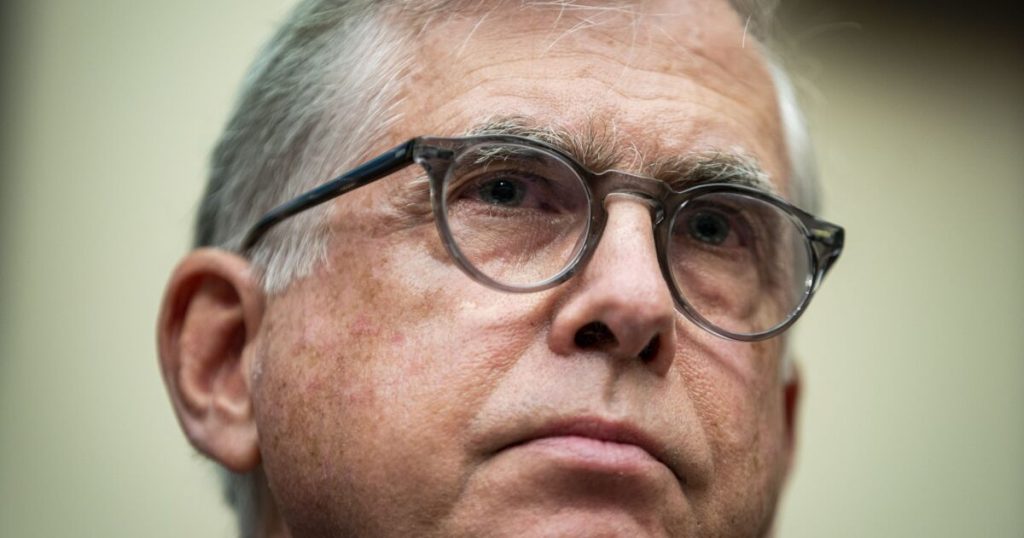Al Drago/Bloomberg
As part of its effort to achieve greater efficiency, Truist Financial plans to restructure its balance sheet to focus much more on core customers and higher-earning businesses — and much less on single-product, lower-yielding relationships.
The balance sheet remix includes the recent sale of a $5 billion student loan portfolio, executives announced Thursday during the Charlotte, North Carolina, company’s second-quarter earnings call. Truist had been letting the portfolio run off at about $400 million per quarter, they said.
The company has already been intentionally pulling back in some lending categories, such as indirect auto, while leaning into others, such as certain point-of-sale lending businesses that it owns. Production at Service Finance, which offers home improvement loans, grew 34% year over year and rose 21% at Sheffield, which provides power equipment loans, over the same period.
“Going forward, we’ll continue to better focus our balance sheet on Truist clients who have broader relationships while limiting our exposure to single-product and indirect clients,” CEO Bill Rogers told analysts during the call. At the same time, the $554 billion-asset company will “evaluate ways to increase the velocity overall” of its balance sheet, Rogers added.
Truist was one of a few banks that announced strategic business moves Thursday. Synovus Financial in Columbus, Georgia, said that it will sell a $1.3 billion medical office loan portfolio and use the proceeds to pay down higher-cost funding. Cleveland-based KeyCorp, the parent company of KeyBank, will shrink its balance sheet by eliminating so-called “standalone loans.”
Truist’s balance-sheet remix is one part of an enterprise-wide effort to reduce expenses, increase efficiency, build more capital and simplify operations, executives said Thursday.
Expense reduction is a large component of that plan. To lower costs, the company is “actively working to identify and accelerate” certain cost-reduction actions that could be implemented over the next 12 to 18 months, including “taking a much more aggressive approach” in personnel management, consolidating businesses, leveraging more technology and “optimizing” operations and contact centers, Chief Financial Officer Michael Maguire said on the call.
Truist has already been finding ways to lower expenses. In April, it said that it would fold its online consumer lending platform, LightStream, into its broader consumer business, which would reduce the costs of operating a second brand. It made a decision this spring to no longer sell or trade mortgage-backed securities and certain bonds, and executives said there could be further reductions in the mortgage business and the amount of real estate the company occupies.
The company declined to identify the buyer of the student loan portfolio. Proceeds from the sale were used to pay down wholesale funding, Rogers said.
“The transaction will modestly hurt [net interest income], but boost [net interest margin] and balance sheet efficiency, exactly what we should be doing in an environment where cost of capital and funding has increased meaningfully,” Rogers said.
Truist’s second-quarter results were weaker than anticipated, according to several analysts. Net income totaled $1.3 billion, down 12.2% compared to the same quarter a year earlier. Earnings per share came in at 92 cents, 8 cents below the average estimate of $1.00 from analysts surveyed by FactSet Research Systems.
Net interest income, which totaled $3.7 billion for the quarter, fell 6.1% compared to the first quarter of 2023 due to higher funding costs, the company said. Still, it was up 7.1% year over year as a result of higher interest rates and loan growth.
Expenses were also on the rise, much to the concern of some analysts who have been wondering when Truist will be able to reduce its spending. Expenses totaled $3.7 billion for the quarter, up 4.7% year over year.
For the third quarter, Truist is now forecasting revenues to be down 4% as a result of seasonally lower insurance revenue and “slightly lower” loan balances, which will further pressure net interest income, albeit at a slower pace compared to the second quarter, Maguire said.
For the full year, the company is predicting revenue growth of 1% to 2%, much lower than the forecast of 7% to 9% that was anticipated in January.
The expense guidance for all of 2023 was also revised. Truist now thinks expenses will rise about 7% versus the 5% to 7% increase that was forecasted earlier this year.
Maguire said the newest guidance around expenses is “at the upper end of our previously guided range due to continued investments in enterprise technology and other areas” and excludes the anticipated surcharge to be levied by the Federal Deposit Insurance Corp.
“This is a number that is higher than where we’ve been targeting, but as we’ve discussed, we are pursuing a number of actions to reduce costs,” Maguire said.
Analysts weren’t thrilled about Truist’s results.
In a research note, Gerard Cassidy of RBC Capital Markets pointed out that “second quarter results lagged expectations.” Meanwhile, David Rochester of Compass Point Research and Trading wrote in a note that while he expected management to lower its full-year revenue guidance again, “core results were effectively even weaker than what we originally expected.”
Read the full article here














